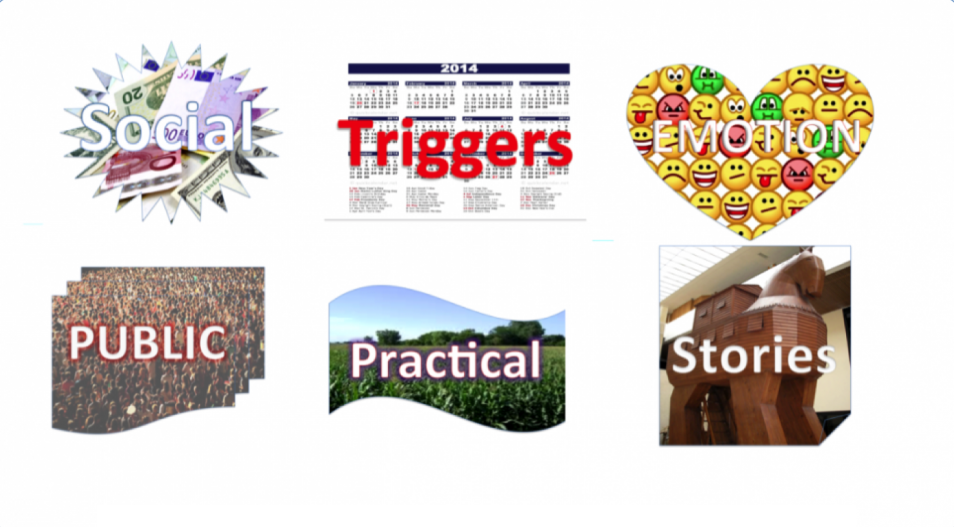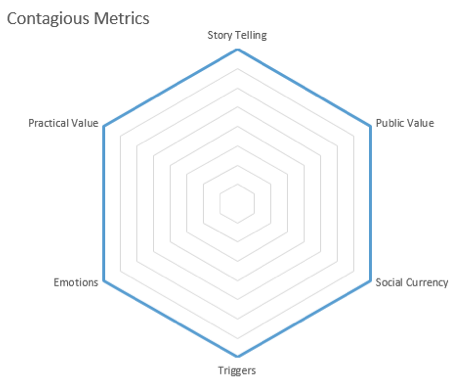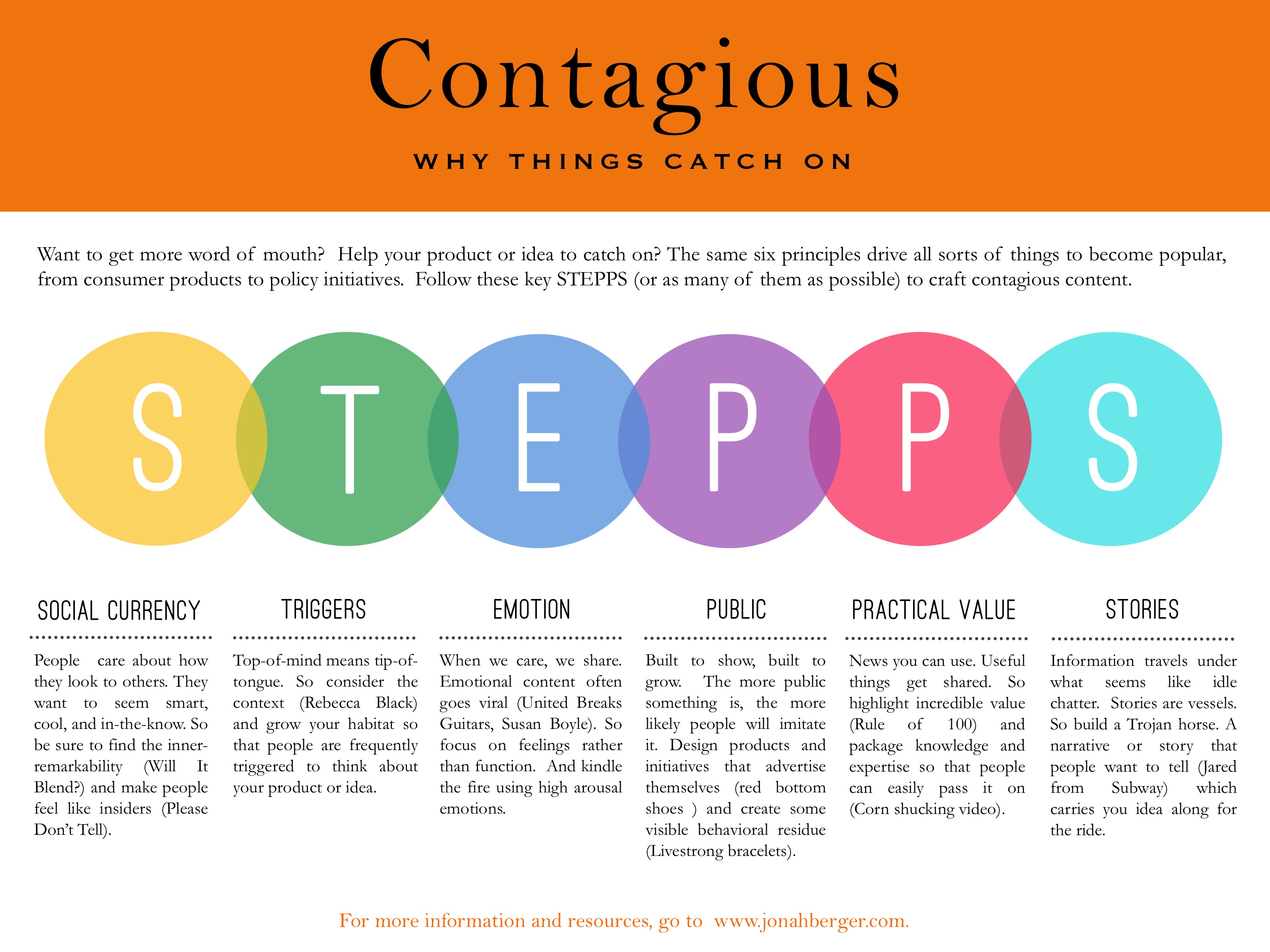“Contagious Metrics”: (based on Jonah Berger’s system from “Contagious”)
I consider 6 factors when determining what makes content viral. My content marketing grading system (1 low value – 4 high value) is shamelessly borrowed from Jonah Berger, and is used when looking at each idea with that frame in mind not on purely our individual gut reactions to a proposed idea.
- Social currency: would sharing this make my blog look cool? Would it make me look like I am awesome amongst my peers?
- Triggers: is this a top of mind subject? Is there some event that this content is related to?
- Emotions: when we share we care! This about the Top 50 Things Nerds Love but they left out of Zelda and I’m angry about that!
- Practical value: Does this make me smarter, is it useful? Does this help me tie a knot, get a credit card?
- Public value: Is it built to show, built to grow? Can I proudly share this without getting laughed at?
- Stories: Does it tell a good story, true or not? Is there a scoop there that a journalist will run with? A viral idea doesn’t need to have all 6 at level 4 for each metric; this is a metric to bring reason to our strategy.
 Contagious Introduction
Contagious Introduction
There are a lot of social scientists who believe they understand virality or what causes certain ideas to spread. Opinion leaders were thought to shape public views such that as gatekeepers of ideas, opinion leaders were able to command the masses to follow their preferences and whims. For Jonah Berger, following the messenger is not the way to go. In fact, individuals are only the spark or the tinder for the spread of an idea. The size of a forest fire is not contigent on the size of the spark but rather on the number of trees that spread that spark.
Having read the Tipping Point, Berger was impressed with the power of trends to be spread. The problem with the Tipping Point was that it didn’t go behind the descriptive to the methodological almost as if there was no way to take these anecdotes and provide a form around which this knowledge could be repurposed to create viral content. Made to Stick is another noteworthy source for inspiration about how ideas remain memorable to readers. Again, there was no methodology. Enter Contagious, Jonah Berger’s Wharton output for general audiences; a book that lays out what he believes are the underlying principles by which memes and other ideas get shared. From the Blentec youtube videos to Baby name choices, Contagious lays out the prerequisites of virality.
What you should be conscious of>>>
1) Viral content has to be shared at scale which means a lot of people have to have the same response to viral content which is “I want others to see this too!”
2) The good news is that anything / any product can be potentially viral. You can engineer virality according to Jonah Berger, so please buy his book to find out more;- P
3) Certain characterisistic make it sharable. The same principles are universally part of ALL virality, according to Jonah Berger, they are: social currency, triggers, emotions, public, practical value and stories.
The Mnemonic for Virality: STEPPS
There are six metrics that each on their own explain why an idea goes viral. These metrics on their own are a powerful weapon, although there is no hard and fast rule, having all six elements presumably is the optimal format. Rest assured, as a thinking person, you will be happy to know that virality is replicable according to Jonah Berger. Not all elements are required for content marketing success however. A minimum of one metric is required by definition!
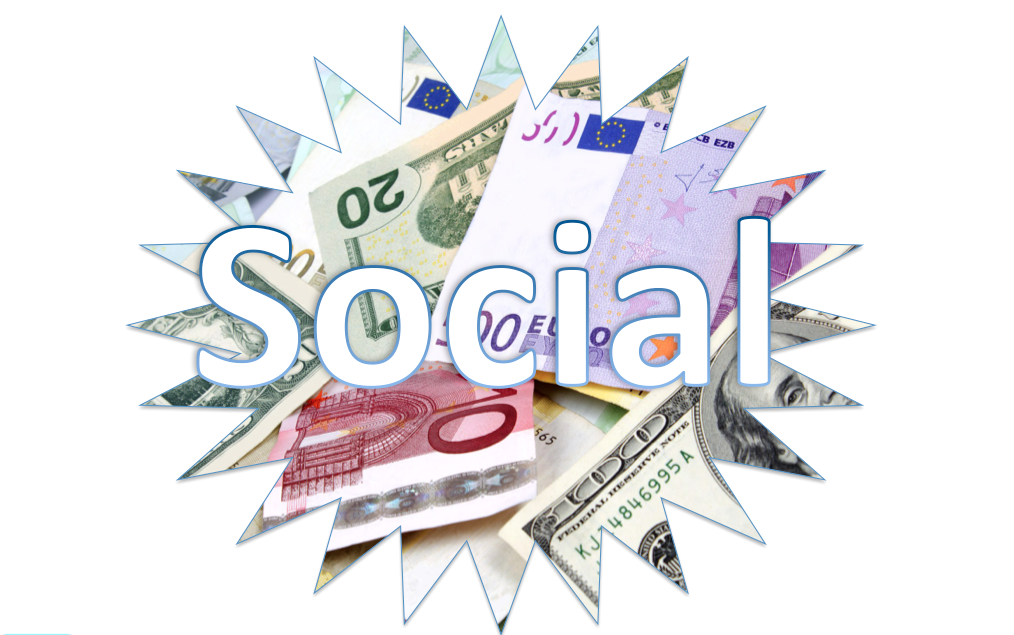 1) Social Currency: how do I look cool by sharing this content? What we talk about makes us cool as conversationalists therefore social currency is something we are always trying to acquire.
1) Social Currency: how do I look cool by sharing this content? What we talk about makes us cool as conversationalists therefore social currency is something we are always trying to acquire.
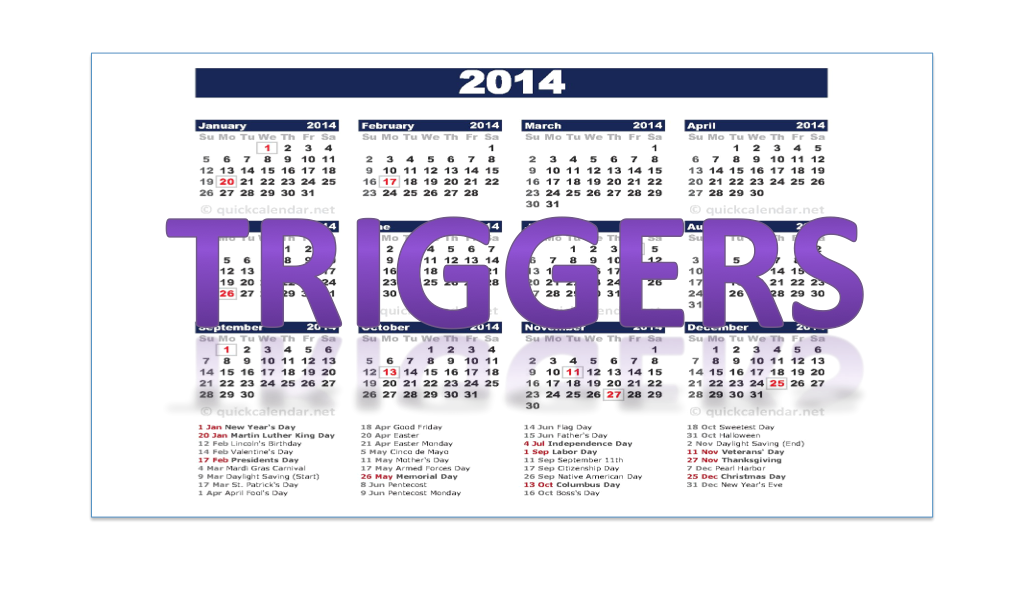 2) Triggers: if you think of a dog you might also then think of cats. People talk about what comes to their mind, triggers like everyday things like new triggers in the environment can get you thinking about certain products.
2) Triggers: if you think of a dog you might also then think of cats. People talk about what comes to their mind, triggers like everyday things like new triggers in the environment can get you thinking about certain products.
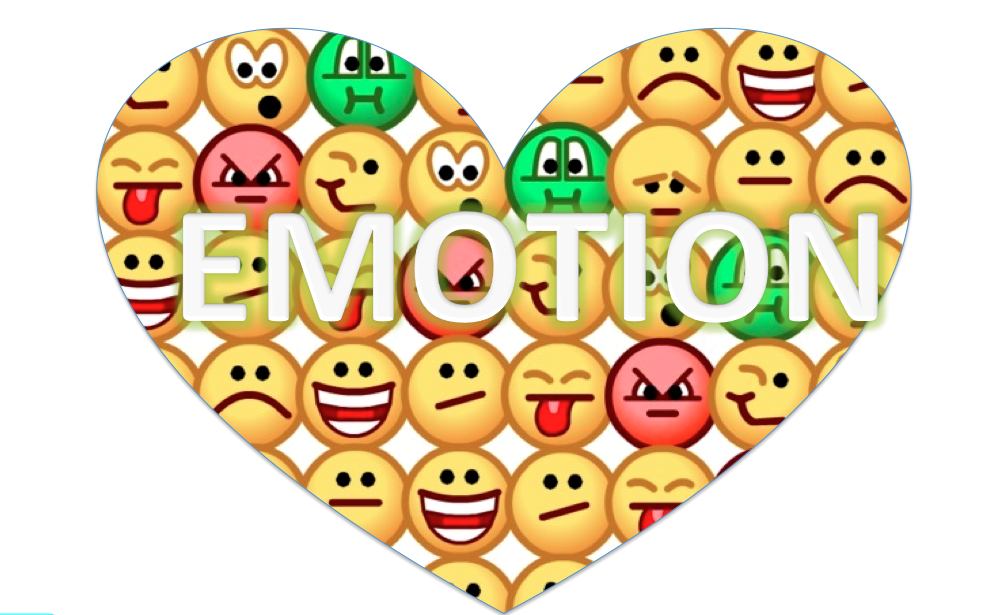 3) Emotion: we share what we care about. The most powerful emotion for sharing is likely awe. Content that focuses on feeling and deep emotion is powerful whether the emotion is good OR bad.
3) Emotion: we share what we care about. The most powerful emotion for sharing is likely awe. Content that focuses on feeling and deep emotion is powerful whether the emotion is good OR bad.
 4) Public: can people see it easily. If it’s built to share like the Apple logo, then it is a piece of status. If you can see a Lance Armstrong bracelet then you’ll like / share / buy it.
4) Public: can people see it easily. If it’s built to share like the Apple logo, then it is a piece of status. If you can see a Lance Armstrong bracelet then you’ll like / share / buy it.
 5) Practical Value: repackaging knowledge in a shareable format is often the key to successful content marketing. Useful information that is free often has good sharing potential.
5) Practical Value: repackaging knowledge in a shareable format is often the key to successful content marketing. Useful information that is free often has good sharing potential.
 6) Stories: properly tell stories as moral lessons. Info is really just idol chatter, the most powerful advertising and content marketing has the brand along for the ride. We need to build Trojan horses to create content marketing.
6) Stories: properly tell stories as moral lessons. Info is really just idol chatter, the most powerful advertising and content marketing has the brand along for the ride. We need to build Trojan horses to create content marketing.
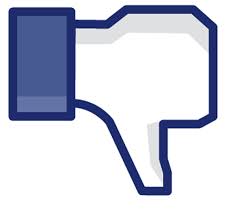 Criticism of Contagious Metrics
Criticism of Contagious Metrics
The general structure is fairly acceptable but in terms of applicability, the Contagious model is not actually that applicable. You could build your content marketing strategy around the Contagious metrics but that won’t make your content viral by default. Content marketing is talked about as if it is the saviour of organic search marketing and gaining an online presence. The reality is that stories are the number one shareable items. Human beings love a good story. If you’re start-up does not have a good story then you will need to piggyback on other metrics but that is super hard to achieve. Berger has cunningly laid out a book that helps understand virality better which subtly implies high value for the reader but he makes no promises about helping you create viral content which is what 60% of the people buying the book are likely hoping for….(figure made up)
 Criticism | Engineering Virality
Criticism | Engineering Virality
Another criticism of Jonah Berger’s Contagious is that he doesn’t layout how many piece of failed viral content you can expect to make before seeing any benefit from virality itself. He doesn’t lay out a clear process for idea generation. The creative development of ideas is something that surely happens spontaneously in the shower or will jogging. How do we know if our idea is valid and will go viral? How much planning should go into virality? Is it a system of meaning? Some of the most shared content is really about non-commercial sharable items. A huge majority of viral content is not something that can be tapped into commercially. In fact, if you try to tack on a brand or product to that viral content that you have engineered, you are likely to not really get the result you want. Most people hate to share brands for free. So designing a viral piece of content that gets shared with a brand along for the ride is rather tough.
 Criticism | The Gatekeeper is Powerful
Criticism | The Gatekeeper is Powerful
Unless the Gatekeeper is a celebrity like Alec Baldwin and the airline wants you to stop playing Words with Friends, then Gatekeepers aren’t a factor. Gatekeepers have a significant impact although it’s difficult to measure. If the creators of content are lumped in as gatekeepers of ideas, one could logical say that Contagious is a useless book since Gatekeepers/ Content Marketers aren’t able to control the message. The paradox within Jonah Berger’s model is that the reason most people buy the book is to figure out how to create viral content. One of the other reasons people bought the book is that Jonah Berger is riding on the story of Wharton School of Management which is one of the best MBA programs in the US. Jonah Berger is himself a gatekeeper of a viral piece of content called Contagious. Obviously, when Guy Kawasaki shares something on Linkedin, people naturally want to like his message because he has previous credibility in the startup space. In other words, Authorship is important and Authorship is a proxy for the socalled “Gatekeeper”. Most vloggers don’t grow their audience with one piece of content marketing, they need to build up credibility. Note that Gatekeepers don’t just buy credibility they have the earn it. Therefore, Berger is wrong about the significance of credibility of the producer and the credibility of influencers who draw people’s attention to such content.
![]() This is part of a synopsis of Jonah Berger’s Contagious complete with analysis and criticism.
This is part of a synopsis of Jonah Berger’s Contagious complete with analysis and criticism.
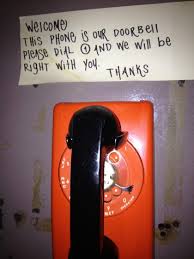 The Social Currency Metric
The Social Currency Metric
There is a hot dog restaurant in New York that bills itself as exclusive. Social currency is about making yourself look bigger and better than you already are. One of the channels most used for self-enhancing social currency is Facebook. Bryan Shippard’s Hot Dog biz Crif Dogs was not really doing well until he came up with a killer idea and rebranded as Please Don’t Tell. He built a secret room where only people who book in advance are able to come in to have a pint and a hot dog. The actual food isn’t particularly special but the experience is what matters. The secret bar/ special secret spot that is defined as anti-marketing. Bryan Shippard created a Discovery Brand where people would share their story about the hot dog bar because it makes them feel good. In kindergarten there was Show and Tell, share thoughts and opinion. Our brains are built to find this kind of activity rewarding. We are also driven to prove to others that we are having a better time then the general pool of people.
 People Want To Feel Empowered
People Want To Feel Empowered
In an experiment by Tamir and Mitchel, showed that people were willing to make a 25% pay cut to share an idea that made themselves feel good. People would take a pay cut to share something different rather than get paid more to do something menial and boring. Human beings don’t brag about failure for the same reason. Human being just want to feel good about what they are doing. It’s the reason that a code blue is always under played at hospital and a code pink is always over played (code pink = new baby) and code blue = heart attack.
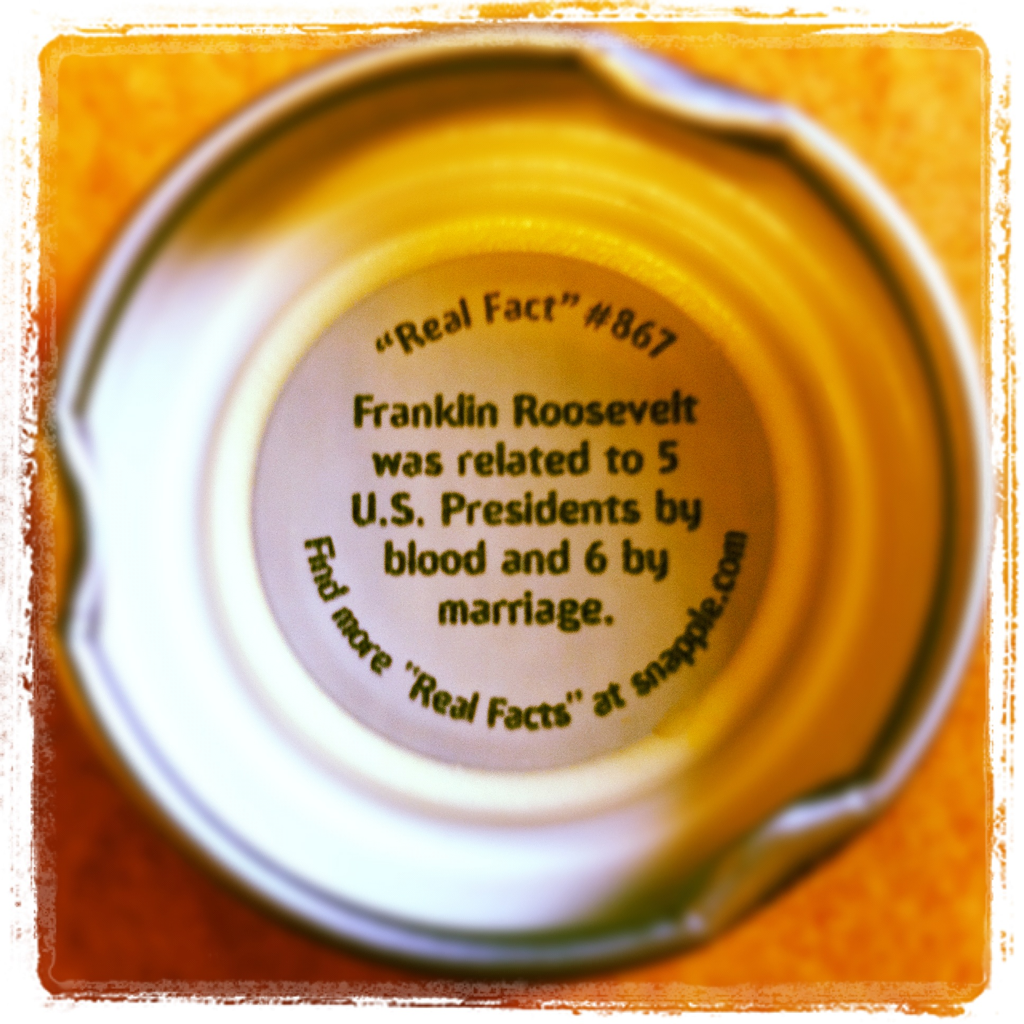 The Wow Factor
The Wow Factor
Snapple had a marketing problem. So their marketing director Rubenstein re-launched the Snapple bottle cap silly facts but this time to relay real facts that were remarkable. Facts like “the average person spends 2 weeks of their total life span waiting at traffic lights.” Naturally people love extraordinary stories and telling those stories is what gives us a special sort of high. In fact, the way we remember stories actually evolves overtime and the memories tend to shift towards the remarkable both bad and good.
 Game Mechanics of Social Currency
Game Mechanics of Social Currency
The gamification of airlines loyalty plans has a prestigious history at American airlines. With Golden then Platinum card holders. The idea is that the perks aren’t that amazing but the social currency of being such a person is impressive. Customers like to feel exclusive or of a higher value than other people. There are loads of companies trying to cash in on this ridiculous gamification of all human activities.
 Criticism | Commercial Social Currency Is Rarely Successful
Criticism | Commercial Social Currency Is Rarely Successful
If social currency functions as Berger explains, why don’t companies try giving people who post about their premium products on Facebook a 10% discount for sharing? The problem is Social Currency works mostly for non-commercial items. When Facebook notified users on newsfeeds that a friend had bought something on Amazon.com, users saw this is a violation of privacy. Users also saw it is a crass marketing ploy which is the core problem with the Social Currency metric. People do not want to seen as pushers of products on behalf of companies. Of course, we can say that if the brand is secondary to the content then that works but creating content that ties the brand into a good shareable piece of content is VERY tough. The product is more socially shareable if there is a premium item like a BMW or a Rolex watch for someone to proudly endorse. Free advertising via social media is not easy to achieve / extremely low success rate for sharing. You don’t have to declare you got some additional benefit from the post, after-all, even if you did it may not prevent others from sharing…. Why this kind of social currency doesn’t take off is that brands don’t trust social and users don’t want to be pushers. The brand has to be along for the ride and not at the forefront. Facebook can’t profit from this form of endorsement which partly explains why Facebook newsfeeds are shrinking in their reach anyway and brands don’t want to lower themselves by giving customers extra incentives to share. What happens when social currency and marketing align? These aren’t questions that are answered in Contagious. Instead Berger talks about extremely rare content marketing on social that is hard to replicate.
 Criticism | Exclusivity As Non-Viral
Criticism | Exclusivity As Non-Viral
Berger seems to lump exclusivity into this Social Currency metric as if it makes perfect sense. It doesn’t. Private clubs, elite universities, exclusive buyer clubs, Judaism, Costco / Sam’s Club and the Free Masons all tap into something related to social currency but it’s not shareable, it’s secret or exclusive. The power of the thing lies in it being exclusive but that doesn’t make it viral. If you want to sell someone something, tell them that they have access to an exclusive club that only a handful of people have access to. Tell them that they are special and they will likely act in a way that makes them more productive and happier. It doesn’t matter if that product is any good, but it matters that you have access where others do not. Social currency on Facebook comes from posting pictures from amazing locales so incentivising User Generated Content might be useful for content marketing in the hotel industry for example BUT for the most part once someone you know posts a funny article you are unlikely to post it again yourself and you no longer have exclusivity on Facebook so in reality EXCLUSIVITY can be anti-viral…
![]() This is part of a synopsis of Jonah Berger’s Contagious complete with analysis and criticism.
This is part of a synopsis of Jonah Berger’s Contagious complete with analysis and criticism.
The Trigger Metric
Most conversations are about things that are mundane. We frequently talk about what is on the top of our mind however. Ziploc bags may be boring but they are frequently thought of because they are useful at lunch times and lunch time is at least once a day. Triggers are about ridding a long with a specific environmentally contingent event. So Friday is a day in the week of course, so Rebecca Black’s song about Friday was consistently being watched on Fridays thus reach viral status…
 Geico
Geico
A strong trigger is better than a slogan. Geico proved this with their caveman advertisements. It was catchy but there is no trigger for caveman because they are so infrequent in the modern world. The best advertising ties a product to something that regularly happens. This includes anything from breakfast to a traffic signal.
 Budweiser
Budweiser
“What’s up” is a huge trigger advertisement. It was a global phenomenon because it was a viral advertisement at the dawn of file-sharing in the late 1990s. Every young dude in their target demographic says what’s up to his friends naturally as a social convention and Budweiser invaded that headspace by inserting it’s social commentary into this phenomanon. So the ad had a natural free ride.
Stay Fresh
You want to avoid content marketing where we don’t hear about the idea after 2 weeks. We need to stick in people’s minds otherwise we will forget about that association. Like the recyclable bag of groceries we forgot until the trigger of the grocery store caused us to remember that we didn’t bring the recycle bags.
 If It Bleeds It Leads
If It Bleeds It Leads
Negative reviews in the New York Times have been found to actually grow sales of various writers. Tuscan Red Wine had massive sales thanks to the fact that there was a review that had said Tuscan Rewind is redolent of stinky socks. Even with it’s getting intense criticism from South Park to NBC News, the Shakeweight sold over 50 million items. Therefore, negative reviews do not equal bad coverage.
 Kit Kat
Kit Kat
Kit Kat had a significant marketing problem in the 2000s. The classic jingle was in retirement phase. It was an amazing earworm but they needed to come up with a new way to sell Kit Kats. Hershey produces many products so it was easy to lose the Kit Kat’s mystique in such a wide range of products. The marketing budget was cut massively due to declining sales so the marketing executive came up with an association trigger. Then a marketing lady thought about trigger association. Kit Kats goes with a coffee. The slogan was a breaks best friend has a coffee and a Kit Kat. In 1 quarter, sales grew by 8% and over a year sales grew by 33%. Kit Kat and coffee association was a trigger so that whenever someone had a coffee they would get a Kit Kat. You need to associate your brand with frequent stimuli in the environment to get a positive association.
 Mars Bars
Mars Bars
Triggers are the reason that Mars Bars sales spiked when the news cycle was focused on the Martian Mission. It’s the reason that Brazilian music sees a rise in sales, as there is a rise in FIFA World Cup viewership. Some problems you might run into are that an effective trigger relies on the frequent keyword. Red -> Coke, Roses etc. Unusual links are powerful. The message is trapped in the trigger association. There was an anti-soft drink advertisement where the Coke was presented as chunky fat that a man is about to drink. The trigger association is aggressive; drinking 1 a day is equal to gaining 10 lbs in a year. But the campaign worked to make a trigger association stick for a time.
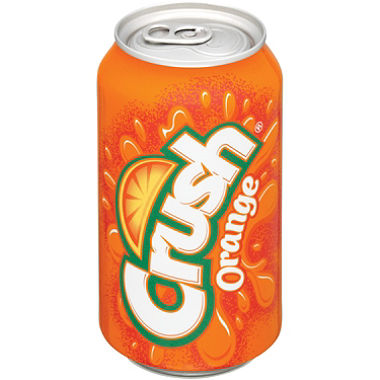 Halloween & the Colour Orange
Halloween & the Colour Orange
Environments are very useful for triggers. Pumpkins and Oranges around Halloween are triggers. That’s why Orange Crush sees it’s best sales in the run up to Halloween. You only think about your recyclable grocery bags when you are that the grocery store parking lot. If only there was a quick trigger for grocery bags before you headed to the grocery store. Cheerio’s get more word of mouth than Disney. Why? Because between 7am and 9am every day in the US, Cheerio’s is mentioned on twitter and becomes a hot discussion item. Meanwhile triggers drive talking. Triggers are like the drummers in a pop band while the lead singer is the Social Currency. Triggers are still very important however.
 Criticism | Triggers As Awesome But Saturated
Criticism | Triggers As Awesome But Saturated
Triggers are everywhere. So going with the usual triggers is going to have a mixed set of triggers. The fact that this is a new marketing science is no surprising. What it is more obvious is that controlling the message within virality is much harder. What if every single blue chip level company is trying to cash in on the Brazilian FIFA World Cup? In a Google search, the problem is that only established players get first page coverage. Google wants to give people what Google thinks those people want. If Google is wrong then they will be optimising towards old brands that are being propped up in search results while other upstarts are crushed by brand level competition.
 Criticism | Isn’t This Just Sponsorship With A New Name?
Criticism | Isn’t This Just Sponsorship With A New Name?
When we think of the place where the Montreal Canadiens player they home games do we call it the Forum or do we call it the Bell Centre? Most of the time, we call it the Bell Centre because that’s the actual name. The telephone company’s name is baked right in the experience of that sporting event. Sponsoring sporting events has been a PR strategy for 50 plus years. Berger didn’t mention this because it would put the whole thing in perspective. He is repackaging an older idea to the social media generation and the age of Google Insights.
 Criticism | Did The Kit Kat Ad Campaign Actually Work?
Criticism | Did The Kit Kat Ad Campaign Actually Work?
Are the sales increases for Kit Kat purely due to the success of an association campaign? Perhaps the growth in sales is due to some other factors. So how did they parse the causation out exactly? I wonder if the causal relationship is more correlative than causal.
![]() This is part of a synopsis of Jonah Berger’s Contagious complete with analysis and criticism.
This is part of a synopsis of Jonah Berger’s Contagious complete with analysis and criticism.
The Emotion Metric
 The common sneeze slow motion pictures are a case study in a shared human experience. And they tend to go viral. Why? because slow mo sneezing is literally awesome. You can see air disturbances in slow motion and that intrigues people. Mysterious coughs caught on film give people excitement about the science behind the slow-mo cough. Science can be very cool which explains the popularity of Veritasium the youtube channel. The image of the cough is highly stimulating. Content goes viral when a lot of people make the same decision to share a piece of content.
The common sneeze slow motion pictures are a case study in a shared human experience. And they tend to go viral. Why? because slow mo sneezing is literally awesome. You can see air disturbances in slow motion and that intrigues people. Mysterious coughs caught on film give people excitement about the science behind the slow-mo cough. Science can be very cool which explains the popularity of Veritasium the youtube channel. The image of the cough is highly stimulating. Content goes viral when a lot of people make the same decision to share a piece of content.
Non-sense is Emotional
Take the New York Times newspaper’s most exciting articles where there is no obvious relationship. The popular headlines are very random and unrelated indeed. So Jonah Berger conducted a content analysis of keywords to try to figure out what went viral or was being shared….he noticed the emotional metric first.
 Awesomeness
Awesomeness
Awe = Science something greater than oneself; great works of arts; daring and discovery. Mysterious = awesome = Godlike. Awe like moments like the panda coughing are powerful because people love, hate and are emotional beings. Emotional arousal is the high order bid. Charlie the Unicorn loosing his kidneys is an emotional twist. At the end of the day, emotional appeals are the core of selling people what they don’t really need therefore when it comes to content marketing, emotionality is key.
The angry United passenger who’s guitar was destroyed for example had a viral hit with “United Breaks Guitars” was a major social trigger message: throwing the guitar leads to the guitar being smashed so the guy wrote a song about it on his other guitar. United Airline’s customer volumes the next quarter dropped significantly. The video is lame but it have 14 million views and United had to pay attention. So even bad products can ride a good story, which brings hope to millions of mediocre things.
Search Indexation with Google is not very emotional. But the Parisian Love video shows the entire Google search features; autocorrect emotional trigger. Even appealing to cute-ness is a useful. The fact is; if we focus on feeling we can get more shares, more links , and more interest.
 Social Media made the Arab Spring more massive in scale. False rumours can have a negative effect. Political cronies make people angry but ultimately caring is sharing so people who are angry also like to share their anger with others. This is why customer complains are so powerful across the board. If you can get people upset or emotional then you will definitely get sharing.
Social Media made the Arab Spring more massive in scale. False rumours can have a negative effect. Political cronies make people angry but ultimately caring is sharing so people who are angry also like to share their anger with others. This is why customer complains are so powerful across the board. If you can get people upset or emotional then you will definitely get sharing.
 Criticism | Sex Appeal Metric
Criticism | Sex Appeal Metric
There are tons of YouTube videos with thumbnails of suggestive things going on. Sex has sold jeans, beer cars and probably life insurance in its career as a metric that is independent of emotion. In truth, perhaps this particular metric should be part of the emotion metric but on it’s own sex is highly appealing. The reason Berger does not talk sex is that he is a professor at a prestigious university with certain standards and practices. Or is it that sex based content is something embarrassing that shouldn’t be shared…
 Criticism | Angry Customers Go Viral
Criticism | Angry Customers Go Viral
A completely anti-marketing phenomenon is the customer complaint, which keeps social media from getting shared. Social media isn’t really marketing, it’s sales. Just like political institutions, companies too are deeply afraid of what people actually want when those wants are unfiltered / free to be made known. Berger under plays this part of the emotional metric although he talks about the United Airlines example, he doesn’t go far enough to explore how corporations are actually ANTI-Share and ANTI-viral marketing entities precisely because they can’t control the message…
 Criticism | Shadenfreuder
Criticism | Shadenfreuder
Another area of emotion is the Shadenfreuder model of manipulation. There are a lot of compilation videos of people hurting themselves. But there have yet to be any commercial uses for this kind of virality therefore Berger stays away. It’s certainly difficult to think abstractly of how shadenfreuder could be used for virality without the sharer feeling negatively about themselves….
![]() This is part of a synopsis of Jonah Berger’s Contagious complete with analysis and criticism.
This is part of a synopsis of Jonah Berger’s Contagious complete with analysis and criticism.
The Public Metric
When Steve Jobs launched the MacBook he realised that the customer experience should be compromised so that other people would know that the computer being used was indeed a Mac when it was opened facing the wrong way. He made sure that the logo opened outwards so that you and the rest of the students in the class could see it easily rather than more logically with the logo facing the user. The direction of the logo is essential. Universities at the top-end of the education spectrum have students with Macs. It became a huge trend in the mid-2000s.
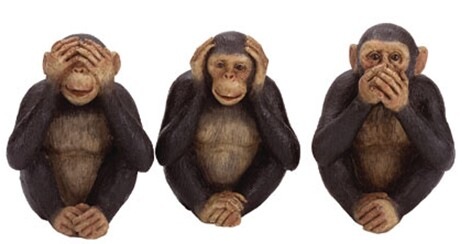 Monkey See Monkey Do
Monkey See Monkey Do
Seeing others doing something makes it easier to do it yourself. If it is built to share than you will be inclined to share. There are laugh tracks in studio audience tapings for that reason. If the tip jar is already almost full you will be more included to chip in as well. People want to back the winning horses, therefore the most public campaigns win out. When Arsenal fans wear their shirts everywhere, they are participating in a public sharing that is very lucrative for a football club like Arsenal.
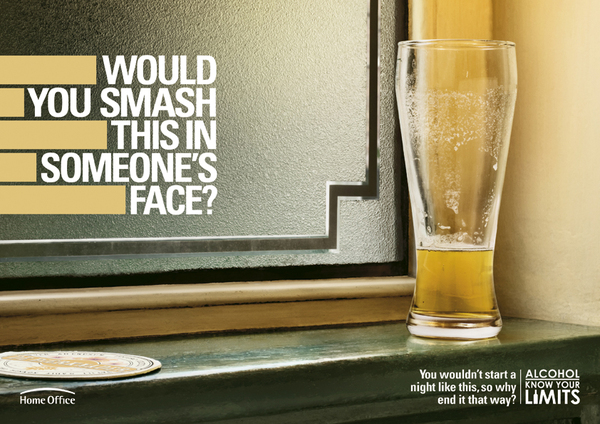 Alcoholism In University
Alcoholism In University
Johansson was trying to get students to stop binge drinking at a US university. What she discovered is that Behaviour is Public but Thoughts are Private. Bringing negative behaviour into the open has negative consequences they weren’t happy with the big drinking but it was still rampant at this university. Students hated the drinking culture but it seemed like it couldn’t be stopped. What Johansson did was get the students to realise that only 2 drinks was the majority of drinkers > if they infer that few people actually do these level of drinking then you can make the public > private.
 Drugs Aren’t Popular, Dude
Drugs Aren’t Popular, Dude
Public message of Just Say No campaign was not as effective as one might have hoped. Because it said: 1) drugs are bad, 2) a lot of people are doing these drugs. The best way to get people to stop doing drugs is to claim that there is a decrease in drug use. “33% decrease in drug use because are bad.” The cool kids are doing these drugs so I should do them as well! The same psychology happens with marijuana smokers who claim that the McDonald archers are really a secret code for weed smoking associations.
Visibility Is Key
Being on the first page of a Google search page is very important. It’s not as easy to see socks so public virality for socks is rather difficult to make happen. LA car preferences are shaped but what others are driving because everyone can see what everyone else is driving. Where as in Seattle, it is rainy most days so you can’t see the car preferences. Observability is an important aspect of the marketing process.
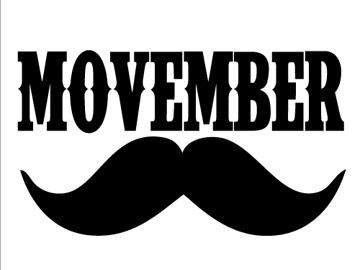 Movember
Movember
The Movember Campaign is all about the moustache. There are 2 million men per year with prostate cancer. 6 million men are diagnosed. Making something public is what prompted the cancer fight. It’s really an ingenious idea because it is marketing on someone’s face for a good cause. Online Dating is private which is a problem so no doubt folks are working on a new way to make it public as an example Tinder is one of these solutions. Erectile dysfunction was a term coined by Viagra in order to address this particular problem in a shareable way. Make it un-obscured, make it public and it will be shared. Wear jeans if you are gay Day was an important idea.
 Hotmail As A Viral Product
Hotmail As A Viral Product
Hotmail bought by Microsoft was an email service that gave you access to email for free. Every email had an endorsement on the bottom (Hotmail is a free email service. Start your Hotmail account today). This endorsement perhaps inadvertent at times led to a massive expansion of Hotmail as a service.
 Livestrong
Livestrong
Ecommerce is spreading around the Internet. Advertisers itself when other actual do that thing. The Livestrong bracelets were developed after considering 2 possible ways to promote Armstrong after his great successes in the Tour De France.
1) A bike ride across America with lance Armstrong.
2) A wristband, which was what Nike, had done to promote basketball. Make the wristband yellow. Armstrong thought both ideas were stupid.
This technique was used for voting such as the looking at voter with bumper stickers. Re-use-able bags are social proof. If you want to reduce the number of people who are stealing petrified wood try to signs.
1) Reduces therefore of petrified word that others are stealing.
2) Please don’t remove in order to keep the state of the forest.
If can’t see what others are doing, then it’s no a good marketing ploy. Explaining to people why something is the way it is more powerful.
Make It Public
o Marketing Wear Two Different Pairs of Shoes Day for a specific cause.
o Coin a term or create a movement.
 Criticism | Making It Public Is Risky
Criticism | Making It Public Is Risky
There are lots of start-ups who put money into creating trinkets or other physical items in order to improve exposure. One company actually distributed 1000s of neck rests at a financial district in London with the hope of raising awareness for their micro-opportunity service. It has to be something cool and public not just something public. Can you think of anything that was public that didn’t get shared? No really, because you wouldn’t have seen it since it didn’t go public. Think of all the social media campaigns that were public but were also destroyed by customer backlash.
 Criticism | Making the Information Private
Criticism | Making the Information Private
There are laws that make things necessarily private. It is illegal to engage in sexual activities in public. Google is now legislated in the EU to be required by law to remove damaging information by request. So legislation has come in to impose on Google the right of citizens to complain by law. Using the power of the state to make things private is not a new idea. For advertisers, making negative reviews of the products is certainly an area that is sensible for Berger to discuss but he doesn’t explore that in his book.
![]() This is part of a synopsis of Jonah Berger’s Contagious complete with analysis and criticism.
This is part of a synopsis of Jonah Berger’s Contagious complete with analysis and criticism.
Practical Value
Some dude named Ken wanted to show his daughter how to hawk corn quickly and easily. You pop the corn into the microwave for a minute then remove the leaves. Awesomely useful videos do tend to get shared. Vacuum Cleaner are debated issues: useful =brand rising. Pay it forward. Sharing cements our friendship. Helping others is essential.
One area of practical value is saving money. Groupon & Livingsocial built business off of saving money, according to Berger. What is interesting is that the bigger the discount the more likely they would share it.
a) The store sells a barbecue for 350 USD with a discount to 250 USD.
b) The store sells a barbecue for 2500 USD with a discount to 240 USD.
Which barbecue do you want? Most people choose A because it looks like a better deal. It’s more practical value that makes you look smart. 75% choose A and 25% choose B.
 The Psychology Of The Deals Is Important
The Psychology Of The Deals Is Important
$11 DVD seems expensive because they used to be 10 cents in the 1940s. Selling at a higher reference point tends to make the deal more valuable looking. The Dead Sea Salt sales company under many brands is engaged in aggressive sales tactics. They tried to sell cream for my eye bags and I got an insane discount but I didn’t’ buy because I had already had a similar mind attack.
Diminishing Sensitivity
30% saving but amazing the price is 650. Go for a 20-minute drive and you would get a 10 savings. The big winner is the relative versus percentage metric.
Rule of 100 | Ordinary Price
Price reduced as significant percentage terms. Low Price: is $25 then you want to do percentage terms, but Absolute price when there item’s value is above 100. You naturally want to have shareable practical advise. But practical value when it comes to health is always being shared. Aspartame’s link to Multiple Sclerosis was an email that got shared around quite a lot. News you can use is really useful. Email is the best way to get babyboomers to share content. Unfortunately, the content is frequently problematic.
 Criticism | Isn’t This Just Social Currency?
Criticism | Isn’t This Just Social Currency?
Useful information is valuable for sharing because it makes you look smarter than you actually are right? So isn’t this kind of sharing really just Social Currency? May that is the problem with all of these metrics. In reality, the cross over is much greater between social currency and practical value than triggers and stories. Still it’s worth noting that these metrics are somewhat arbitrarily derived. Ok, to be fair, practical value is useful on it’s own. When we search for how to tie a bow tie we are clearly not looking for the goal of sharing this tid-bit. My criticism is that usefulness is viral in most cases because it make you look smarter thus giving you social currency…
 Criticism | Practical Value = Saving Money
Criticism | Practical Value = Saving Money
Is this the most interesting thing he could talk about or what is the most topical in light of the emergence of viral companies like Groupon. Viral here meaning it was popular for a short while but now gets about 1 user per day. It was not the case the users would share awesome deals from Groupon, that was statistically rare. Practical value is not something that gets shared as much as other method in my opinion.
![]() This is part of a synopsis of Jonah Berger’s Contagious complete with analysis and criticism.
This is part of a synopsis of Jonah Berger’s Contagious complete with analysis and criticism.
The Story Metric
Trojan Horses are symbolic of all good stories. Greeks destroyed the town by offering their enemy a gift horse and then soldiers popped out in the night etc. We don’t really remember the details but we do remember the general point, which is that you should not trust enemies bearing gifts….Beware of Greeks Bearing Gifts is the morale or more obviously don’t trust your enemies.
 Stories are powerful ways of teaching important lessons. Ray Bradbury famously said that story writing is like using a sledgehammer on the brain. His novel Fahrenheit 451 was really about the decline in reading and the power of stories to teach lessons and values. Most readers know that every Shakespearean play has all the ingredients for conflict and struggle that we are likely to encounter in our lifetimes. In politics, we think of this as a narrative to explain a point for example the case with Mouse-land by Tommy Douglas or the Ruritania by Ernest Gellner. Online story telling is powerful and emerging in parallax adverts for BMW for example. Stories are really ships for delivering lessons to people. Breaking Bad teaches people that if you have useful information you should try to kill anyone who also has that same skill, controlling information makes you more powerful…which is a common theme in corporate cultures.
Stories are powerful ways of teaching important lessons. Ray Bradbury famously said that story writing is like using a sledgehammer on the brain. His novel Fahrenheit 451 was really about the decline in reading and the power of stories to teach lessons and values. Most readers know that every Shakespearean play has all the ingredients for conflict and struggle that we are likely to encounter in our lifetimes. In politics, we think of this as a narrative to explain a point for example the case with Mouse-land by Tommy Douglas or the Ruritania by Ernest Gellner. Online story telling is powerful and emerging in parallax adverts for BMW for example. Stories are really ships for delivering lessons to people. Breaking Bad teaches people that if you have useful information you should try to kill anyone who also has that same skill, controlling information makes you more powerful…which is a common theme in corporate cultures.
Great customer service is an example of a highly powerful tool for people. In the modern world, the customer is always wrong according to Berger. Word of mouth does spread. Stories solve the problem. Narrative engages our brains therefore you don’t challenge the claims through. The story blocks out your criticism of the underlying ideas.
 Subway
Subway
Jared from the Subway commercial was really a great story tied up in weight lose & a Subway sandwich. Dove saw double-digit growth because of their highly emotional story. Evolution lets people talk about beauty norms. This highly emotional story is powerful.
 Crashing the Olympics
Crashing the Olympics
The crashing of the Olympics was the biggest belly flop of them all. Ron had crashed the Olympics with his Golden Palace.com T-Shirt. Without our knowledge we are being manipulated. This was the Fool in the Pool. The problem is that crashing the Olympics has nothing to do with the Casino so the story didn’t fly.
Along For The Ride
The latest theory in marketing is that story must integrate the brand in the integral level of the story telling itself. Need to put something in the Trojan horse. Evian had the most successful advertising campaign of all time for the babies on roller-blade ads. The problem is there Virality has to also being the brand on board. The Egyptian Panda chees ads are really good: it is also violent. The man in a ludicrous suit in a grocery stores. Critical details have to include the brand in order to be successful. Certain details are frequently retained while other ideas or details not included. You need to build valuable with a given Trojan horse in order to realise you dreams. You need to hide the message inside the story so that people can’t tell the story without your brand.
![]() This is part of a synopsis of Jonah Berger’s Contagious complete with analysis and criticism.
This is part of a synopsis of Jonah Berger’s Contagious complete with analysis and criticism.
 Conclusion of Contagious
Conclusion of Contagious
Vietnamese people coming to America after the Vietnam War had no English skills. Tippy Heddron from the film the Birds went to visit these ladies in their refugee camp in California and introduced them to nail saloons as a business opportunity that they could sink their teeth into. 20 original Vietnamese ladies trained and got licensed. They were hard working and did their jobs diligently and kept at it. Those 20 women spread the news about nail saloon opportunities to a community that didn’t immediately speak English. Now, 80% of all saloons in California are owned by Vietnamese people. It’s the same reason that 60% of all liquor stores were run by Irish people in the 1880s. Ideas get shared between people you knew. The six STEPPS occurred.
The Rules of Virality are that:
1) Any product can be contagious;
2) Individuals are only the spark; like a forest fire, we don’t say the site of the spark mattered we say that the spark happened and others carried the fire.
3) Certain characterising makes it shareable the same principles overlap: social currency, triggers, emotions, public, practical value and stories.
So you need to create a checklist of these ideas:
- Social Currency -> Games / Remarkable.
- Triggers -> Cues Grow.
- Emotion -> Focus Effectively
- Public -> Advertise itself.
- Practical _> Can I use it.
- Stories -> Would I tell it.
 Criticism | How Content Marketing Really Goes Viral
Criticism | How Content Marketing Really Goes Viral
The goal of content marketing or making something go viral is to attract audiences and natural links to your website. It is not to get conversions as is implied by the Blentec example that Jonah Berger regularly mentions. Content marketing is about getting into people’s cultural world of ideas. But Berger is missing the finer details of virality: 1) The first major area where Berger fails to develop his argument is that viral content needs to have a community of people who already know about a specific item. For example, Star Trek folks are likely to share content about Star Trek thus spreading your viral content through their community. If you content does not have a natural community then it is unlikely to get shared. 2) The second major weakness in Berger’s model is that the content has to have an argument, ie it does one of the following: a) reinforce a belief, b) refute an opposing view, c) reignites a debated topics, d) ask for advice, e) perform with community backing it. These are all important in most content marketing…. 3) The third major weakness is Berger never discusses how to amplify your content; how do these ideas get seeded or shared? Is really good content naturally going to get shared? Virality can be outreach led where an email is sent around, or you post on social media, or the content seeding was paid for…I guess Berger doesn’t really get into the useful content marketing stuff which might be too niche for his audience but it’s still a valid complain!
 Criticism | Culture Matters Metric
Criticism | Culture Matters Metric
Criticism of Contagious is missing culture relevance as a hug factor for whether something is shared. Most of the virality is American-centred which is limiting. Most sharing happens locally. We don’t share a meme in the Chinese language because that won’t make sense for us. We don’t share things that aren’t part of our identity or aren’t part of the ethos. Being foreign however, can work to ones advantage. Alternatively in rare cases like South Korea’s Gangnam Style, we share a youtube video because it is strange but also culturally similar. It’s exotic but not alien. Music transcends culture. In the case of Panda cheese, we share it because it is secretly foreign but it does feature western ideas with a hint of violent aggression which is not typical of US base advertising. I think it’s quite sensible to include cultural relevance in the mix here.
 Criticism | Parallel Idea Metric
Criticism | Parallel Idea Metric
Another reason things go viral is that the ideas in them are similar to something else that has already been approved by the cultural universe to be valid. So a viral video that complains about a major brand like United would fit into a whole parallel viral sphere of complains and anger at rich, established brands. Attack ads in political campaigns are a sport in of themselves. Think of all the video that have duplicate patterns and copy-cat videos like the Harlem Shake. This kind of meme is rather powerful.
 Criticism | Iron Grid Over Mushy Humanity
Criticism | Iron Grid Over Mushy Humanity
Criticism: Jonah Berger is trying to bring sanity in an insane world. Social scientists are always trying to explain human behaviour through some kind of systematic approach. Are there really just 6 metrics / elements to virality? Or is that a convenient way to frame the ideas behind marketing and sharing. The problem is that I don’t have an alternative model and bringing some clarity to the problem is preferable to not trying at all. Would you rather this book not lay out some system for explaining virality rather than not?
 Criticism | Viral Content That Wasn’t Successful
Criticism | Viral Content That Wasn’t Successful
Some of the more popular viral content isn’t readily available or has been removed suggesting that virality is a temporal ephemeral marketing bit. Companies like Groupon and Livingsocial are likely in a state of collapsing value. Perhaps virality is really all very emotional and not logical at all. Perhaps viral content really does not have much staying power?
 Criticism | What About Films, Start-Ups and Pop Stars
Criticism | What About Films, Start-Ups and Pop Stars
How come Berger ignores the fact that most music, film and businesses start out as viral content that gets shared? Think of the movie the Monuments Men which had an amazing idea behind it. Did the film succeed? No, it was a disaster because of a bad script and self-indulgent actors. It’s pretty obvious that certain pop stars are made famous purely from their long standing screen recognition. The best example recently has been Lana Del Ray who came out of no where to become a super star even though she can’t sing very well live. Virality is extremely difficult to bottle so some might think virality is out of reach.
![]() This is part of a synopsis of Jonah Berger’s Contagious complete with analysis and criticism.
This is part of a synopsis of Jonah Berger’s Contagious complete with analysis and criticism.

